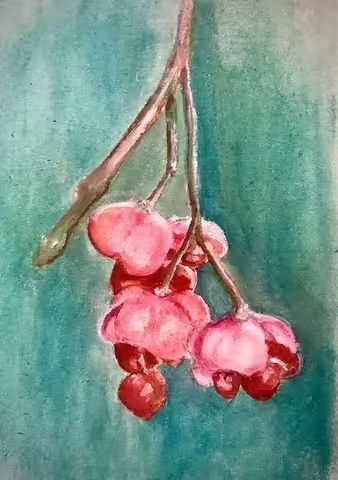Every fall, I engage in the ritual of scouring the various woodlots on my property to remove invasive honeysuckle. Fortunately, now after several years of doing this, most of the plants I have to remove are small. Now it's just like weeding a garden.
This past October, as I was out “weeding” the woods I happened to notice a small clump of unusual woody stems. Looking up I saw distinctive rosy-pink fruit hanging from the upper branches. Since there were no leaves left on the tree, I brought a handful of twigs and fruit inside for further investigation.
Something looked familiar about this plant. It reminded me of the invasive landscape varieties of Burning Bush. Indeed it belonged to the family Celastraceae. Commonly know as the Wahoo, Spindle Tree or Burning Bush, it's Latin name is Euonymous atropurpureus.
Native to the Eastern United States, it is an under story clump-forming tree. It grows to heights of between 12-20 feet but can stay shorter and form colonies in woodlands. It has ovate leaves and unique 4-loped reddish-pink fruit and attractive gray bark with lighter patches on the trunk. Morton Arboretum gives it a conservation number of 8 and also notes that it is tolerant of Black Walnut toxicity.
I wondered why I hadn't noticed this small clump before but it could have been because this section of the woods had recently lost several trees in last summer's storms and now was cleared out and easier to walk through.
It's always a joy for me to discover new plants. I am amazed I am still finding new things after all these years.
I don't know how the tree got the name Wahoo but I love saying it.
Wahoo – it's here!
Rose Moore – Master Naturalist
Winter 2021
